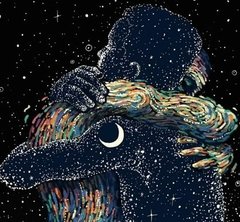Search the Community
Showing results for tags 'Physics'.
Found 6 results
-

Eastern and Western lenses to Analytic Idealism with Bernardo Kastrup and Swami Sarvapriyananda
silent thunder posted a topic in Hindu Discussion
Both of these men have elicited my deep respect over time with their insights and sharings. To hear them speak together and explore the commonalities inherent in their remarkably different approaches to exploring the nature of reality and human consciousness is a delight to me. One of my earliest exposures to the incredible crossover of quantum theory in western physics and the long established lineages of eastern esoteric knowledge came via the sharings of Fritjoff Capra's amazing book and his insights revealed in The Tao of Physics, in which he revealed the potent similarities of insight that western quantum theory was arriving at (much to the credit of the likes of Niels Bohr and David Bohm) and how western physics had come to mirror on nigh on every level, deep insights known in the east in vedanta, taoist and buddhist circles for many centuries. Bernardo Kastrup, who's background is hard physics, has evolved into one of the leading proponents of philosophical Idealism which aligns with what my experience of reality has been from early childhood. To see the similarities reflected in modern physics and idealism philosophical theory to ancient established lineages is a comfort and wonder of sorts. Swami Sarvapriyananda will likely be very familiar to most here. What delights me most of all is perhaps the reinforcement of the notion that source is one and we all are extensions of it, and so, when sincerely approached, any avenue of study can eventually lead to similarities of realization and insight reflected in how the human perceptual apparatus engages with and interprets the signals inherent in the field of energy we all stem from and occupy. Thought some others might appreciate it as well, so here's the conversation. -
1/137 is known as the fine structure constant. It pops up in the mathematics of cosmological physics. If our reality relies on consciousness to exist, then perhaps to obtain ONE there are 137 levels of consciousness to realize as the path? Just an extrapolation of notions combining many interests...Or perhaps there are 137 universes that coexist in our reality? Today's politics surely points to separate thought-based universes in a reality seemingly shared! Bringing science and spirituality together is just one of my hobbies I 'spose. Stay well on your paths my friends.
-
Last week a random video popped up on my YouTube feed about ESP and it was interesting in the sense that the person (Russel Targ) both has an extensive career as a laser engineer and ESP researcher for the government. The most important part of his book is that he tries to put into math the theory of non locality of spacetime and in doing so explains the possibility of ESP and other phenomena many of us have experienced in our lives or hear from other people. Not to mention old Buddhist explain a similar fashion. I wonder if there is more theories out there that try to use science to prove the "super natural" (I hate that word because not is outside of nature).
-
Here's part of a series I'm working up about Grand Unified Field Theory and Daoist writing. https://docs.google.com/document/d/1YK5arGrvuvWiUcEJstl-2g5e51hyzdHETQ27lgCIfIg/edit?usp=sharing
- 8 replies
-
- 6
-

-
- quantum physics
- physics
- (and 4 more)
-
Want to learn Physics? http://physics.info/ Welcome prev discussion summary practice problems resources next Table of Contentsmechanics thermal waves electricity modern foundations more
-

Beautiful Documentary! High Anxieties: The Mathematics of Chaos!
DalTheJigsaw123 posted a topic in Group Studies
The documentary looks at the modern advances in mathematics and how they affect our understanding of physics, economics, environmental issues and human psychology. The film looks at how developments in 20th Century mathematics have affected our view of the world, and particularly how the financial economy and earth’s environment are now seen as inherently unpredictable. The film looks at the influence the work of Henri Poincare and Alexander Lyapunov had on later developments in mathematics. It includes interviews with David Ruelle, about chaos theory and turbulence, the economist Paul Ormerod about the unpredictability of economic systems, and James Lovelock the founder of Gaia theory about climate change and tipping points in the environment. As we approach tipping points in both the economy and the climate, the film examines the mathematics we have been reluctant to face up to and asks if, even now, we would rather bury our heads in the sand rather than face harsh truths. http://www.youtube.com/watch?list=PL6A4853E48FC0C986&v=VRT0c4qT3LI&feature=player_embedded#!- 2 replies
-
- mathematics
- math
-
(and 6 more)
Tagged with:




